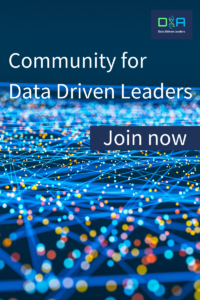Many questions arise in the process of designing the future roadmap for your digital organization. This article provides a guiding framework for answering these questions based on your current MDM organization.
Why do we even need NextGen Data Strategies & Data Governance?
The priority of a problem usually rises in lockstep with the economic impact described by the business value either being created or destroyed. This holds true for data and the extent seems to grow daily: on average organizations believe poor data quality accounts for about $15 million in losses annually according to Gartner. This is expressed among other things by the fact that about 79% of the already scarce resources being data scientists are spending their time on preparing data rather than creating or improving models. The lack of agility due to poor data quality and lack of transparency became apparent in the COVID-19 crisis, as many companies were struggling to cope with the sudden changes in the business landscape and respectively their business models. This is especially true for companies with a historically grown heterogenous system landscape, as these systems hamstring the organization to act with the required adequacy. We’ve long passed the point at which data is perceived as an optional advantage over competitors, but now a necessity having impacts as deeply as the business strategy itself. It’s crucial to approach data strategy as holistically as we approach business strategy and set up a sophisticated Data Governance framework. The implementation of both a data strategy and data governance are no longer solely driven by the IT departments but by each individual unit in the organization.
How to approach NextGen Data Strategy & Data Governance
Before defining an overarching vision, the creation approach must be understood to avoid pitfalls along the implementation based on a poorly designed strategy. Data strategy & data governance are closely intertwined, we’ll look at the two areas separately for the sake of simplicity. When implementing the strategic roadmap, a proper governance is equally important for achieving the long-term vision. For both areas the distinction in short-, medium- and long-term planning are essential to prioritize the steps and create a clear roadmap. A strong governance framework is the foundation and strategy the encompassing roadmap which in combination, guide the whole data management approach. Only with this solid frame is it possible to create long-lasting and sustainable solutions having a real impact on your business model and provide the prosperous environment for innovation creation. The integration of artificial intelligence or robotic process automation (commonly referred to as RPA) is one example of an innovative topic, which can be found on many of today’s roadmaps already.
NextGen Data Strategy
Though the strategy can and most likely will evolve over time, it is essential to invest time and effort in initially creating a concise and well-thought-out strategy. Especially with regards to the importance of a clearly defined strategy as an absolute prerequisite for the data governance framework, this investment will pay off! Hence the question: What do you have to think of in order to avoid any impediments? Before you can define actionable items on your roadmap, a deep understanding of the business strategy, the underlying business model and its implications for your data strategy are indispensable. While this may sound very trivial it often seems to be overseen and when implementing the strategy, the “obvious” gaps become apparent. The overall business objectives tend to dictate the short-term roadmap. This usually boils down to inadequate quality of data, which represents the fundament of any further data management actions. Questions that quickly unveil potential improvements are:
- What is our highest priority target for the years to come?
- Where is data a central part of our business processes and what impact does it have on our quality / margins / customer satisfaction?
- Which business processes have only partially or not at all been digitized and why?
- Which internal factors are currently posing limitations to our ambitions?
The answers to the above allows for evaluating the readiness based on a maturity assessment. This assessment classifies the current data management approach across multiple dimensions describing the operational & cultural coverage in the company.  Figure 1: Approach in order to assess the Data Management (DM) Maturity The current infrastructure is a central cornerstone of your strategy with implications to both feasibility and additional efforts in the implementation process. Oftentimes the historically grown, heterogenous system landscape must first be unraveled and sorted to the point further systems can be implemented, without taking major risks of threatening the business. This includes reassessing whether the initial strategy, e.g. pursuing a best-of-breed or best-of-suite approach, is still valid and if so, are your current actions aligning with this strategy? It is also recommended to assess the degree of overlap between the system functionalities, which tends to happen gradually over time, due to the continuous updates in each system. Mid- to long-term roadmaps will undoubtedly include advanced data management ambitions: advanced analytics, artificial intelligence & machine learning, process mining and robotic process automation. A solid foundation is essential when globally introducing these technologies and crucial to start developing first proof of concepts (PoCs) as soon as possible. The design & potential implementation of PoCs enable a steep learning curve. The technologies that should be addressed first depends on the data management assessment outcome, e.g. a strong foundation in business process data enables self-driving processes and could potentially be an initial PoC. This leverages the available capabilities and technologies in order to increase the return for new initiatives by lowering the upfront cost, while providing the frame to learn and adapt upcoming roll-out and refinement activities. It’s crucial to build the required in-house knowledge in a controlled test environment and gradually include the real-world factors affecting the PoCs. All activities are carried out continuously over the entire period, but the focus shifts from initial basic activities to later innovation & development topics.
Figure 1: Approach in order to assess the Data Management (DM) Maturity The current infrastructure is a central cornerstone of your strategy with implications to both feasibility and additional efforts in the implementation process. Oftentimes the historically grown, heterogenous system landscape must first be unraveled and sorted to the point further systems can be implemented, without taking major risks of threatening the business. This includes reassessing whether the initial strategy, e.g. pursuing a best-of-breed or best-of-suite approach, is still valid and if so, are your current actions aligning with this strategy? It is also recommended to assess the degree of overlap between the system functionalities, which tends to happen gradually over time, due to the continuous updates in each system. Mid- to long-term roadmaps will undoubtedly include advanced data management ambitions: advanced analytics, artificial intelligence & machine learning, process mining and robotic process automation. A solid foundation is essential when globally introducing these technologies and crucial to start developing first proof of concepts (PoCs) as soon as possible. The design & potential implementation of PoCs enable a steep learning curve. The technologies that should be addressed first depends on the data management assessment outcome, e.g. a strong foundation in business process data enables self-driving processes and could potentially be an initial PoC. This leverages the available capabilities and technologies in order to increase the return for new initiatives by lowering the upfront cost, while providing the frame to learn and adapt upcoming roll-out and refinement activities. It’s crucial to build the required in-house knowledge in a controlled test environment and gradually include the real-world factors affecting the PoCs. All activities are carried out continuously over the entire period, but the focus shifts from initial basic activities to later innovation & development topics.

